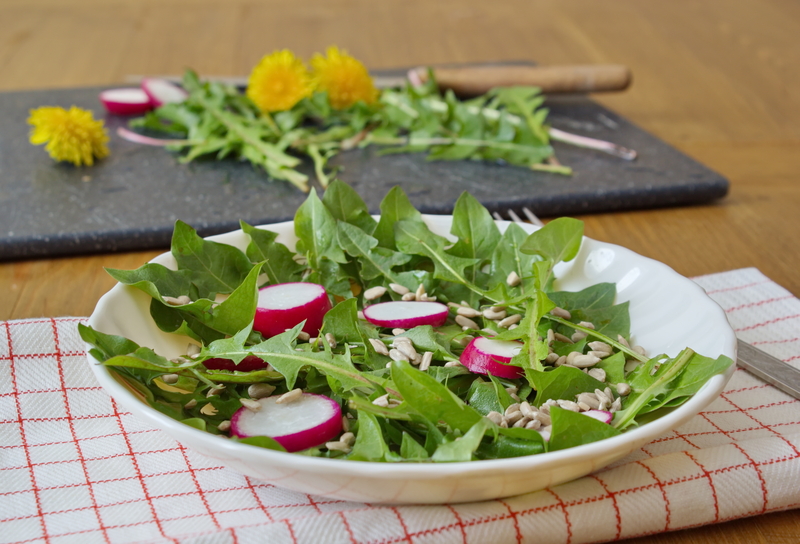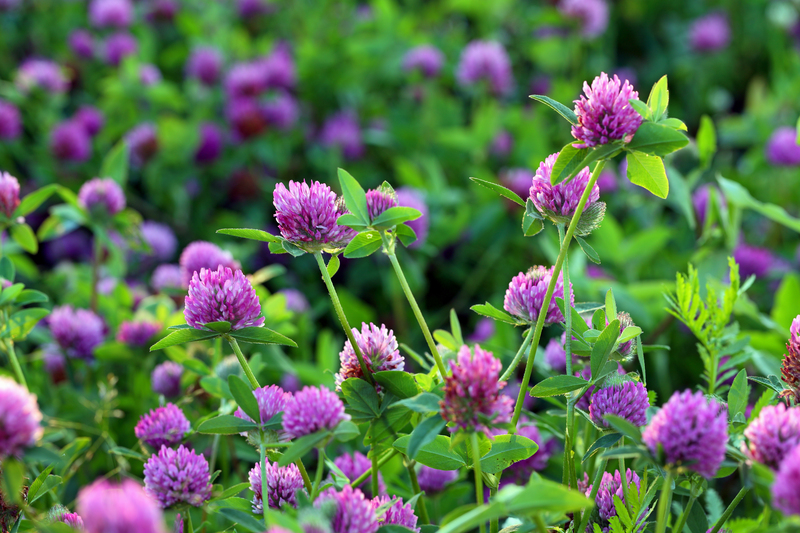Garden Solutions to the Climate Crisis
Posted on 11/09/2025
Garden Solutions to the Climate Crisis: Cultivating a Greener Future
Climate change is one of the most pressing challenges of our time. As individuals, families, and communities look for impactful ways to reduce their environmental footprint, garden solutions to the climate crisis stand out as both accessible and highly effective. In this comprehensive guide, we'll explore how sustainable gardening, eco-friendly landscaping, and practical cultivation can help mitigate climate change, build resilience, and create healthier spaces for all.

Understanding the Role of Gardens in Combating Climate Change
When people think of strategies to address the climate crisis, gardens may not be the first solution that comes to mind. Yet, our backyards, community plots, and even small balconies are powerful tools in the fight against global warming. Let's delve into why gardening is key to climate action:
- Carbon Sequestration: Plants absorb atmospheric carbon dioxide (CO2) during photosynthesis, locking away carbon in their roots, stems, and soils.
- Biodiversity Support: Native gardens foster pollinators and beneficial insects, supporting local ecosystems and increasing resilience.
- Urban Cooling: Green spaces reduce the 'urban heat island' effect, cooling the air and reducing the need for energy-intensive air conditioning.
- Stormwater Management: Healthy gardens act like sponges, absorbing rainwater, preventing runoff and flooding, and filtering pollutants.
- Reduced Food Miles: Homegrown produce eliminates the carbon footprint associated with transporting food long distances.
By embracing these sustainable garden solutions to the climate crisis, we not only reduce greenhouse gas emissions but also create healthier, more resilient communities.
Key Principles of Climate-Smart Gardening
1. Prioritize Native and Climate-Resilient Plants
Choosing native plants and those adapted to local climate conditions is paramount. These species are better equipped to handle drought, heatwaves, and local pests, requiring less water and fewer chemicals. Native plantings also support pollinators and promote biodiversity--a cornerstone of ecosystem health.
- Research local flora: Visit native plant nurseries or consult with local horticulturists for advice on climate-adapted species.
- Avoid invasives: Invasive plants can disrupt local ecosystems and require extensive management.
2. Regenerative Soil Practices
Healthy soil is the foundation of any sustainable garden. By adopting *regenerative gardening* techniques, you can increase soil organic matter, improve water retention, and sequester more carbon.
- Composting: Add kitchen scraps and yard waste to a compost pile to return nutrients to the soil and reduce methane emissions from landfills.
- Mulching: Mulch helps retain moisture, suppress weeds, and add organic matter as it breaks down.
- No-dig methods: Minimal soil disturbance preserves soil structure and carbon stores.
- Cover cropping: Sow cover crops in off-seasons to protect and enrich soil.
3. Water Conservation Techniques
With intensifying droughts and unpredictable weather, conserving water is central to climate-friendly gardening.
- Drip irrigation: Deliver water directly to plant roots, greatly reducing evaporation and waste.
- Rainwater harvesting: Collect rain using barrels or cisterns for irrigation during dry spells.
- Xeriscaping: Design your garden with drought-tolerant plants and minimal water needs.
- Swales and rain gardens: Shape landscaping to direct, slow, and infiltrate stormwater for maximum absorption.
4. Grow Your Own Food
Raising fruits, vegetables, and herbs cuts down on food miles, decreases dependency on industrial agriculture, and minimizes packaging waste. Even a few pots of herbs on a balcony can make a difference.
- Vertical gardening: Maximize small spaces with trellises or towers.
- Succession planting: After one crop finishes, quickly plant another for continuous harvest.
- Seed saving: Preserve resilient local varieties for future planting.
Low-Carbon & Sustainable Garden Practices
Tool and Material Choices
Many traditional garden tools and materials have a surprisingly high carbon footprint. Here are greener alternatives:
- Electric or manual tools: Swap gas-powered mowers and trimmers for electric or hand tools to eliminate emissions.
- Recycled materials: Use upcycled wood, stone, or salvaged items for garden beds and structures.
- Organic amendments: Avoid synthetic fertilizers and pesticides which are energy-intensive to produce and may harm local wildlife.
Encourage Wildlife Habitat
Biodiversity is crucial--healthy gardens serve as *miniature refuges* for bees, butterflies, birds, and beneficial insects. This improves pollination, pest control, and ecosystem stability.
- Native hedges or wildflower meadows attract and shelter pollinators.
- Water features such as birdbaths support amphibians and insects.
- Deadwood piles and rock mounds offer nesting sites for various creatures.
Reduce, Reuse, Recycle
Climate-resilient gardens prioritize resources and minimize waste. Consider these strategies:
- Repurpose containers: Use old buckets, sinks, or even shoes as quirky planters.
- Recycle garden waste: Compost or chip branches for mulch instead of sending them to landfill.
- Choose eco-friendly products: Select biodegradable pots and natural mulches over plastics.
Garden Designs for Climate Resilience
Drought-Proof Landscaping
Dry spells are becoming more frequent due to climate change. Drought-proofing your garden is now essential:
- Choose deep-rooted, drought-resistant species.
- Use water-holding mulch, like straw or bark chips.
- Install shade structures to reduce soil evaporation and heat stress.
- Group plants by water needs to ensure efficient irrigation and hydration.
Flood-Resistant Designs
In areas with increased rainfall, garden solutions to the climate emergency must include strategies for managing excess water:
- Build raised beds or mounds to protect root zones from waterlogging.
- Install permeable paving and green roofs to increase infiltration and reduce runoff.
- Create rain gardens with water-loving plants in low-lying spots.
Climate-Proof Edible Gardens
Food security is a climate concern, and adaptable garden planning helps ensure continued harvests:
- Interplant diverse crops for resilience against pests, disease, or weather extremes.
- Choose heritage and hybrid varieties proven to withstand local conditions.
- Use season extension techniques, such as row covers, cold frames, or poly tunnels.
Community Gardens: Collective Action Against Climate Change
While personal gardens are important, community garden solutions to the climate crisis multiply benefits:
- Pooling knowledge and resources accelerates the spread of sustainable practices.
- Shared spaces increase green cover in urban areas, enhancing carbon sequestration and cooling.
- Intergenerational education passes on skills and builds climate awareness.
- Local food production improves food security and reduces packaging and transport emissions.
Community gardens also foster a sense of stewardship, connection, and hope--all vital in the face of environmental challenges.
Technological Innovations in Climate-Friendly Gardening
Modern technology is opening new avenues for garden solutions to the climate crisis:
- Smart irrigation systems use real-time weather data to minimize water waste.
- Soil sensors give feedback to optimize fertilization and moisture.
- Online platforms connect gardeners for seed swaps, produce sharing, and collaborative climate action.
- Genomic research is developing crops that are even more resilient in the face of changing conditions.
Overcoming Barriers to Climate-Conscious Gardening
Transitioning to sustainable gardening does pose challenges:
- Initial costs (e.g., for rain barrels or native plants) can be a barrier, but many solutions pay for themselves over time in reduced water, fertilizer, and energy bills.
- Lack of knowledge can be addressed through local workshops, online resources, and community networks.
- HOA or municipal restrictions may limit garden choices--advocacy and education can help change policies to promote climate-resilient landscaping.
Gardening for a Cooler, Healthier Planet: The Ripple Effect
Perhaps the most powerful thing about garden solutions to the climate crisis is their multiplying effect:
- Neighbors are inspired by lush, healthy gardens and adopt their own green practices.
- Children learn by doing, becoming lifelong stewards of the environment.
- Pollinators and wildlife return, restoring balance to local ecosystems.
- Health improves thanks to fresh food, time outdoors, and reduced air and water pollution.
These sustainable gardening solutions ripple out, building momentum for broader climate action and creative adaptation across neighborhoods, cities, and nations.

Conclusion: Plant Change, Grow Hope
In summary, garden solutions to the climate crisis are not only possible--they're practical, proven, and within reach for everyone. By focusing on native plantings, regenerative soil care, smart water use, low-impact practices, and community collaboration, we can turn every plot of earth, every balcony box, and every community greenway into part of the climate solution.
*Let your garden be your vote for a cooler, greener, and more hopeful planet. The changes start at your doorstep!*
FAQs about Garden Solutions to the Climate Crisis
- What is the most important step for climate-friendly gardening?
Start with soil health: Composting and mulching typically provide the greatest benefits, followed closely by choosing climate-adapted plants. - Can small gardens make a difference in the climate crisis?
Yes--every garden matters: Collectively, small steps add up, especially as more people adopt climate solutions at home. - Are there resources for learning about native or resilient plants?
Check with local extension services, botanical gardens, or native plant societies for plant lists and advice. - How does growing food help the environment?
It reduces emissions from transportation, packaging, and industrial farming, while offering fresher, healthier produce.
Further Reading and Resources
- RHS Gardening in a Changing World
- EPA Greenacres: Landscaping with Native Plants
- Garden Organic: Gardening for Climate Change
- National Wildlife Federation: Garden for Wildlife
Now is the time to put garden solutions to the climate crisis into practice. From city balconies to sprawling yards, every green space counts. Plant, nurture, and grow a climate-resilient future--one garden at a time.

